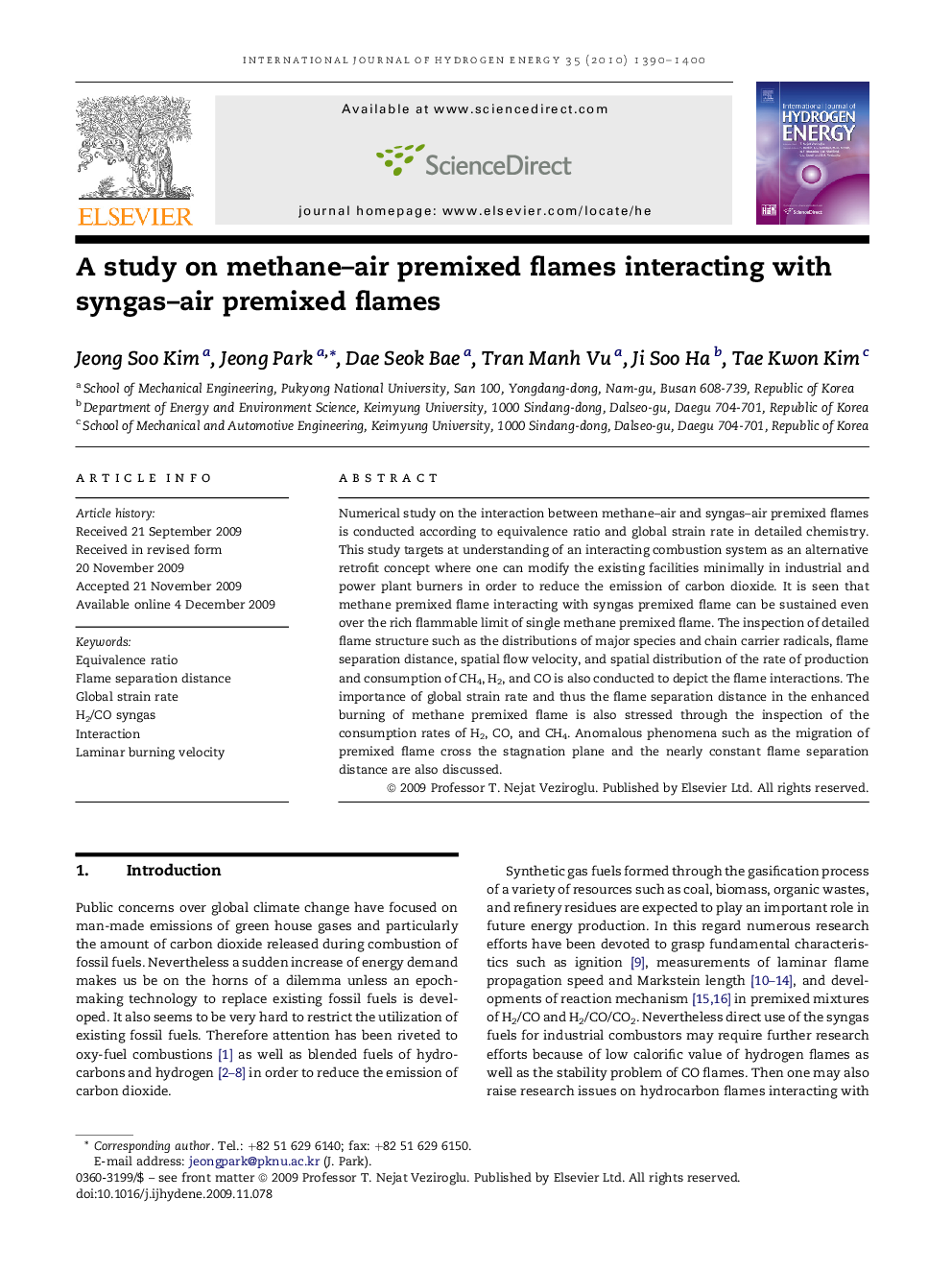| Article ID | Journal | Published Year | Pages | File Type |
|---|---|---|---|---|
| 1273534 | International Journal of Hydrogen Energy | 2010 | 11 Pages |
Numerical study on the interaction between methane–air and syngas–air premixed flames is conducted according to equivalence ratio and global strain rate in detailed chemistry. This study targets at understanding of an interacting combustion system as an alternative retrofit concept where one can modify the existing facilities minimally in industrial and power plant burners in order to reduce the emission of carbon dioxide. It is seen that methane premixed flame interacting with syngas premixed flame can be sustained even over the rich flammable limit of single methane premixed flame. The inspection of detailed flame structure such as the distributions of major species and chain carrier radicals, flame separation distance, spatial flow velocity, and spatial distribution of the rate of production and consumption of CH4, H2, and CO is also conducted to depict the flame interactions. The importance of global strain rate and thus the flame separation distance in the enhanced burning of methane premixed flame is also stressed through the inspection of the consumption rates of H2, CO, and CH4. Anomalous phenomena such as the migration of premixed flame cross the stagnation plane and the nearly constant flame separation distance are also discussed.
